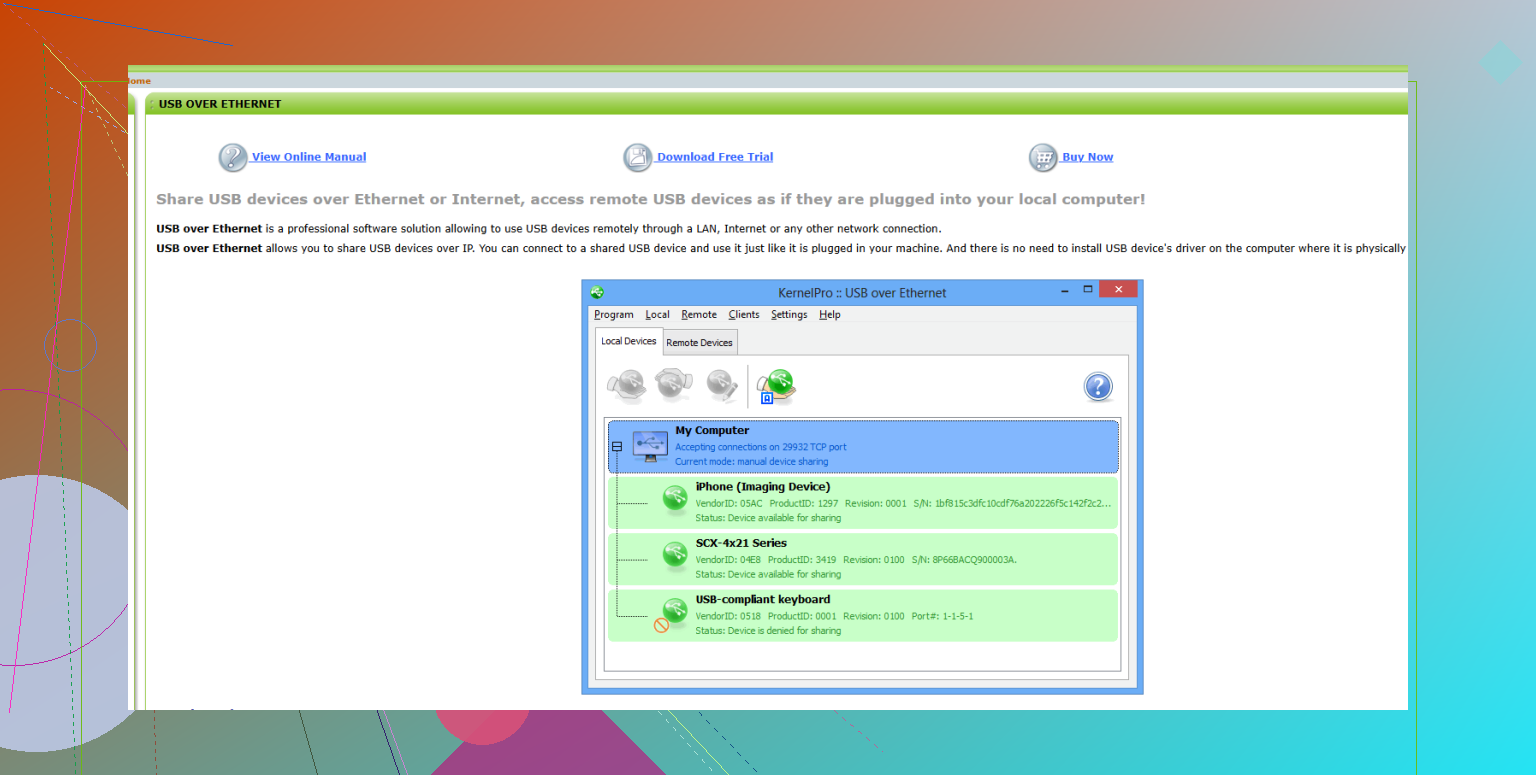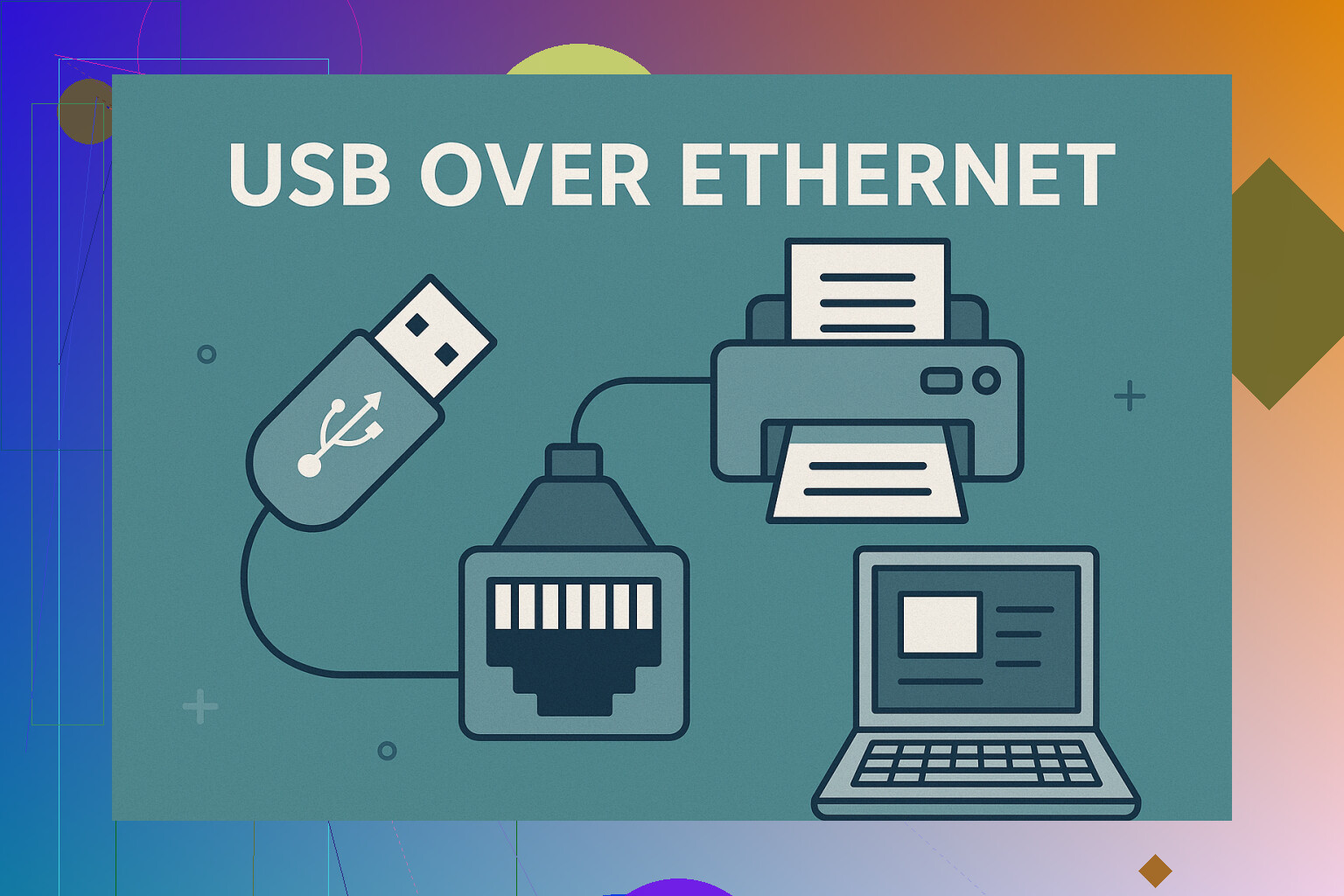I’m trying to access a USB device on my main computer from another PC on my network over ethernet. I’ve tried a couple of software solutions but haven’t had any luck. Does anyone know a reliable way to do this or can recommend a specific tool or setup method? Need to get this working for a remote workstation setup.
Looking for a Decent USB-over-Ethernet Tool That Doesn’t Require My Soul
So, here’s the deal: I’m on the hunt for some way to make my random USB gear shareable among a handful of computers at work. If you’ve ever needed your USB fingerprint reader, scanner, AND label printer available from multiple desks, you know my pain. You’d think it’d be easy, right? Nah. Google keeps shoving KernelPro Usb over ethernet in my face every time I search.
Here’s What Rubs Me the Wrong Way
 $179 only gets you 3 devices?! That’s a joke; I’ve got at least 5 things I want connected at once.
$179 only gets you 3 devices?! That’s a joke; I’ve got at least 5 things I want connected at once. Windows only. Dude… One of my servers is running Ubuntu, and I’m not about to play the ‘VM-within-a-VM’ game.
Windows only. Dude… One of my servers is running Ubuntu, and I’m not about to play the ‘VM-within-a-VM’ game. Hasn’t been touched since 2020. Some people update their coffee machine firmware more often.
Hasn’t been touched since 2020. Some people update their coffee machine firmware more often.
I’m all for paying for solid tools, but this feels like dropping $7 on a coffee from 2020: overpriced, stale, and probably going to give my computer a stomachache. Anybody got a better (cross-platform) way to do this?
When you think you’ve discovered some hidden gem and it turns out to be cubic zirconia… yeah, that was my experience with the above. FWIW, I actually installed the trial for science, but it crashed more than my browser with 49 tabs open. Moved on fast.
Here’s a real tip for anyone in a similar spot: I ended up running into USB over Ethernet from Electronic Team and, wow, it just… worked - no forum drama, no weird limitations, and not frozen in the pre-pandemic era.
If You Like Bullets, Check These Features:
- Runs perfectly on Windows, Mac, and Linux – one less headache.
- One license manages up to 10 devices. That’s actual value.
- Priced at $159, so it’s cheaper than the other one while doing more.
- Built-in encryption, auto-reconnection, and USB-over-RDP support—no need to chain five sketchy utilities together.
- Devs seem to roll out updates pretty consistently; I didn’t feel like I was using abandonware.
Tested from a Windows laptop to a Linux desktop, then added a Mac into the mix out of spite, and everything played nicely together. Can’t promise miracles, but for me it ended the months-long ‘USB Device Not Recognized In This Region’ saga.
Let’s be real: how is the search still showing me overpriced, outdated single-OS stuff when for $159 you’re getting all-in? I feel like I solved a side mission in an RPG and unlocked the real loot. If someone’s got an even better option (or a DIY solution that doesn’t involve six Docker containers and two Raspberry Pis in a trench coat), please drop it below.
If software’s failing you, I feel your pain. Sharing USB over ethernet SHOULD be easy in 2024, but as you and @mikeappsreviewer found, most “solutions” are Windows-locked, ludicrously priced, or just plain ancient. (And don’t even get me started on the ones that require you to mortgage your soul or set up a server room worthy of NASA just to get a label printer online.) Gotta say though, my luck with USB Network Gate has been hit-and-miss. It’s definitely the less painful of the options, but weird latency issues would still crop up when I tried passing through a webcam—your mileage may vary.
If you’re strictly opposed to buying anything or you only need minimal access, here’s a couple alternatives:
- USB/IP: Native on Linux, pretty decent for straight-up passthroughs. It’s fiddly as hell, the docs might make you weep, but hey—free. Also, for Windows support you’ll be fighting driver dragons, so consider yourself warned.
- Dedicated USB-over-Ethernet hardware dongles (Server Devices): I know, not “software,” but honestly? For mission-critical stuff, these little boxes (from Silex, Digi, etc.) are stupid reliable. Plug your USB in, connect the box to ethernet, and presto—everyone can access it. Downside: Price. But they just work.
And look, don’t get distracted by the “freeware” scene. Most open-source USB-over-Network projects are half-finished, kinda like those New Year’s gym memberships.
Also, I stumbled across this very thorough writeup that actually helped me wrap my head around what’s going on: Master USB over Ethernet: A Practical Guide for Seamless Device Sharing. Details everything from troubleshooting to network bottlenecks—worth a glance.
So yeah, if your setup is cross-platform and you have no patience for projects abandoned before COVID, USB Network Gate is decent (with some caveats). But if you’re doing funky or security-sensitive things, don’t sleep on hardware or the masochistic joys of USB/IP on Linux. Now excuse me while I explain to my boss why the HR fingerprint scanner is busy “enumerating devices.”
Alright, everyone’s got their horror stories with USB-over-ethernet, so here’s my two cents (decidedly less than @mikeappsreviewer’s empassioned novella). First off, forget the “plug and pray” dream if you’re hoping for something that works instantly across Windows, macOS, and Linux—reality doesn’t work that way.
I’ve battled with enough of these “USB over network” platforms to know most will stab you in the back at the worst possible moment. That said, if you NEED something dependable for, say, random USB sticks, dongles, or maybe a printer, USB Network Gate actually won’t make you weep (much). It’s not perfect, but the user interface isn’t an archaeological relic, which is more than I can say for half its competition. Webcam pass-through is sometimes spotty though; seems like @mikeappsreviewer and I both suffered in that hell.
Now, for stuff like MIDI interfaces, drawing tablets, or literally anything where latency is king—run far, far away from software entirely, and buy hardware. Those Silex or Digi boxes are pricey, but if you value your sanity, you’ll thank yourself. (Or not, when you get the AmEx bill.) I do disagree a bit with leaving freeware out in the cold, by the way—not ALL community projects are abandoned, but they are often more pain than reward for daily use.
Honestly, if you don’t need remote plug/unplug or device redetection every ten seconds, try using a more robust solution like modern USB sharing tools that get actively updated before you lose a weekend to Stack Overflow misery. Or, just use RDP for basic “office gadget” sharing if you can get away with it—sometimes the best fix is to sidestep the problem entirely.
Bottom line: If you want “reliable”, you’re always gonna pay—either in dollars or in time spent wrestling drivers. Choose your poison.
Here’s the thing: everyone wants the mythical “just works” button for USB-over-Ethernet, but it’s a unicorn. USB Network Gate gets trotted out a lot (and for totally rational reasons—it actually supports Windows/Mac/Linux, hasn’t been left for dead, and you don’t need to mortgage your future for a license). It has a nice UI, and on basic hardware like storage devices or even some printers, it’s as close to no-fuss as you’ll get. But on the real, for anything high-latency sensitive—think gaming peripherals, drawing tablets, webcams—it’s still susceptible to stutter, odd disconnects, or occasional lag spikes that will drive you bonkers if you’re a power user.
Pro: Cross-platform, reliable updates, clean interface, reasonably human support.
Con: Pricey for home users, not flawless with real-time/video/MIDI hardware, laggy if your LAN is spotty.
The folks above went all-in on hardware dongles from Silex/Digi or the open-source grind of USB/IP. Hardware is rock solid but hurts your wallet; USB/IP makes you a part-time sysadmin. For lighter cases, toss Remote Desktop Protocol or even Google Chrome Remote Desktop into the ring if you just want to print or do basic tasks—the catch, of course, is you’re not sharing a USB port, just using a remote session.
If you want pure plug-and-play for specialized tools (like firmware flashing, measurement hardware, etc.), sometimes even USB Network Gate is a roll of the dice—be ready with a backup plan. And yeah, about freeware: there are a few diamond-in-the-rough projects, but you’re betting free time against your nerves.
So: USB Network Gate for normal gadgets, hardware devices if you crave certainty, or drop back to indirect solutions like RDP if you can dodge USB entirely. Pick your headache.

